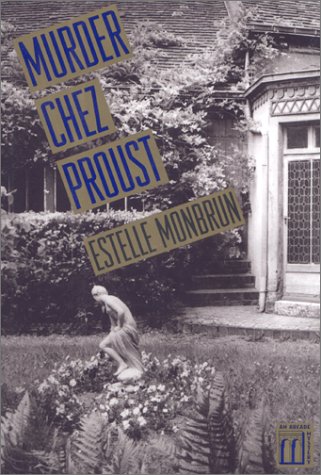GoodReads meta-data is 256 pages rated 3.0 by 27 litizens.
Verdict: Best for Proustians

A small conference of Proustians gathers at Illiers in Aunt Lèonie’s house now a museum dedicated to the sickly Marcel. The organisers include the unscrupulous Adeline whose speciality is blackmailing others with her own remembrances of things past. She brow beats her timid secretary who is also at the mercy of her PhD dissertation supervisor, a man combining all the worst features of a god-professor, one who smokes. To add to the spice, Adeline has both a lover, who really does love her, and a fiancee. Neither of whom see her faults, so readily apparent to others. In the case of these two men, love is not only blind, but deaf and dumb.
In addition to the locals, a party of American stereotypes has descended on the conference. Well, the French did invent the concept of ‘chauvinism.’
The plot thickens when Adeline is found dead in the house museum. Inspector Jean-Pierre Foucheroux is there to investigate along with his sergeant Leila Djemani. These two soon establish a long list of people with motives to harm Adeline, including all those mentioned above and more. In fact, just about anyone who ever met her.
There are some apposite Proust references, but never enough to satisfy a Proustian and too many for others. There is the usual bluster from witnesses, and the secretary is so timid it is hard to believe she is a Parisienne of thirty.
Foucheroux and Djemani (nicknamed Gimpy and Chipmunk by colleagues) make a good pair of sleuths, and I liked the context. But the pace is slowed by Foucheroux’s backstory, a matter of indifference and irritation to me. While the characterisations are largely cardboard, I did love the displays of scholarly pretension in several of them. That part rang true. God-professors, indeed.
 Estelle Monbrun
Estelle Monbrun
The author is a teacher who has no doubt seen all of these characteristics on display more than once. She has several other titles of the same ilk.
As I was finishing this book, I thought it so-so. Then I read the author’s afterward, which I found charming, informative, and engaging. Maybe I will read another one. She being a serious literary scholar had no ambition to write a novel, until moving to St Louis and discovering the necessity raking leaves.
Huh?
She went at leaf raking with such conviction that it led to a herniated disk, and while lying abed contemplating her errors, lacking the concentration to bandy lit crit, she wrote this krimi. By placing it is chez Proust, by dotting it with Proust bons mots, by populating it with Proust enthusiasts, she hoped it might entice some readers to turn to the man himself. The pleasure in forming that ambition led her on to other writers, e.g., Collete, Montaigne, and more.
Moi, I never went at leaf raking with conviction, though I have certainly gone at it, marvelling at how many leaves a couple of trees drop. The last time I did this I had to stuff them into large orange bags because these were collected to later be opened and the leaves shredded and the bags re-used. Well that was the story. However the low bid contractor had taken the money and run, and the bags were all going — unopened — into land fill. But we rakers, until the story was blown, had the comfort of supposing the work of bag stuffing had an environmental benefit. Ha, ha, ha. OK but you try stuffing endless leaves into orange bags to see how much fun it is.
Skip to content
